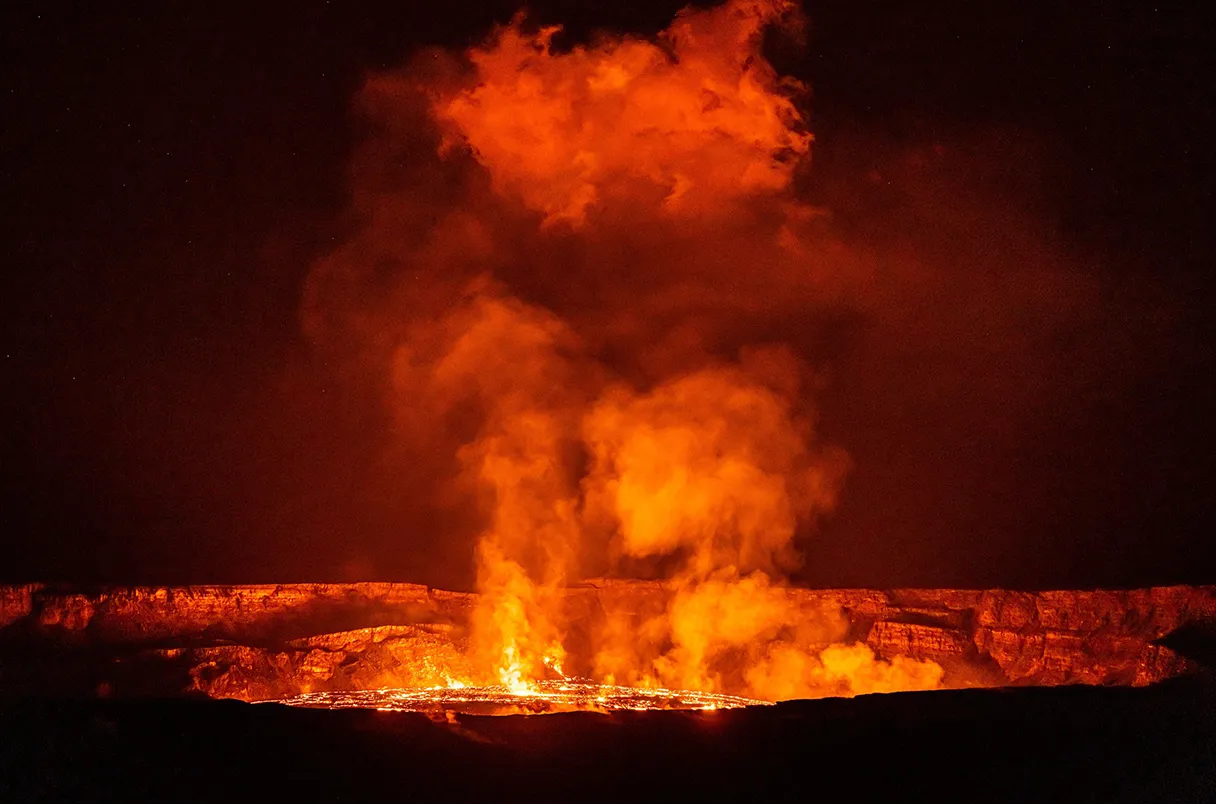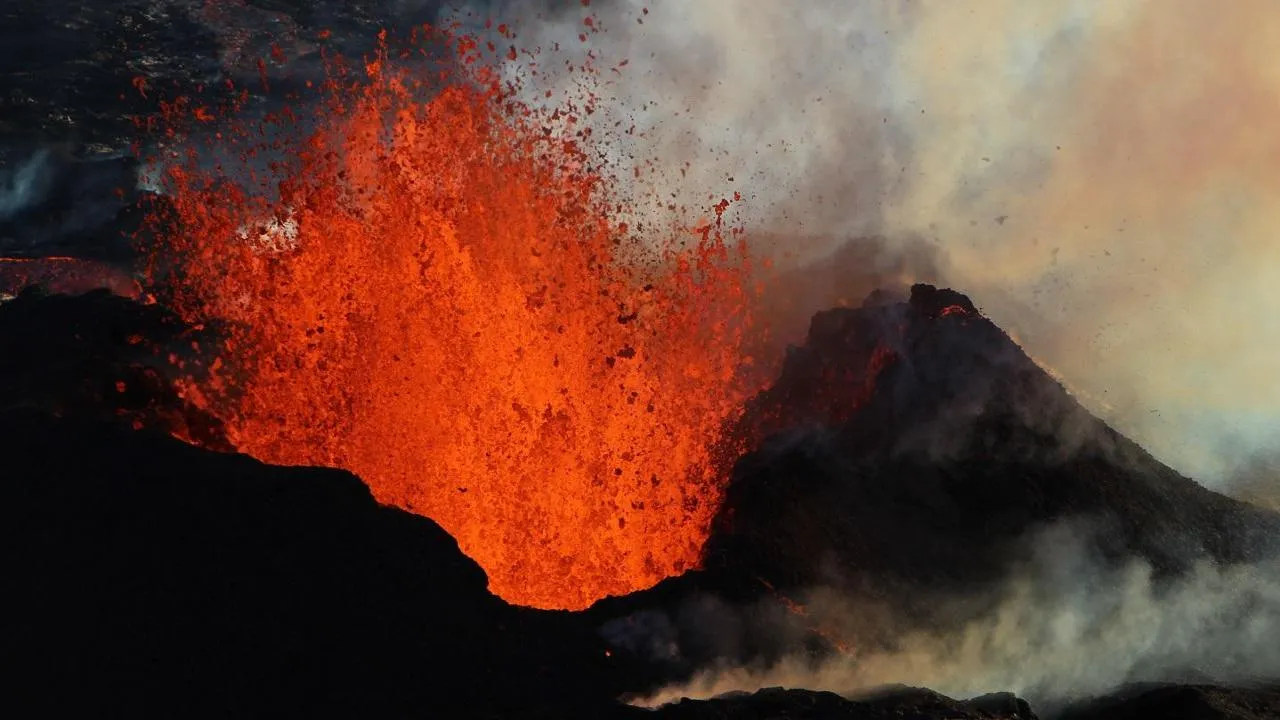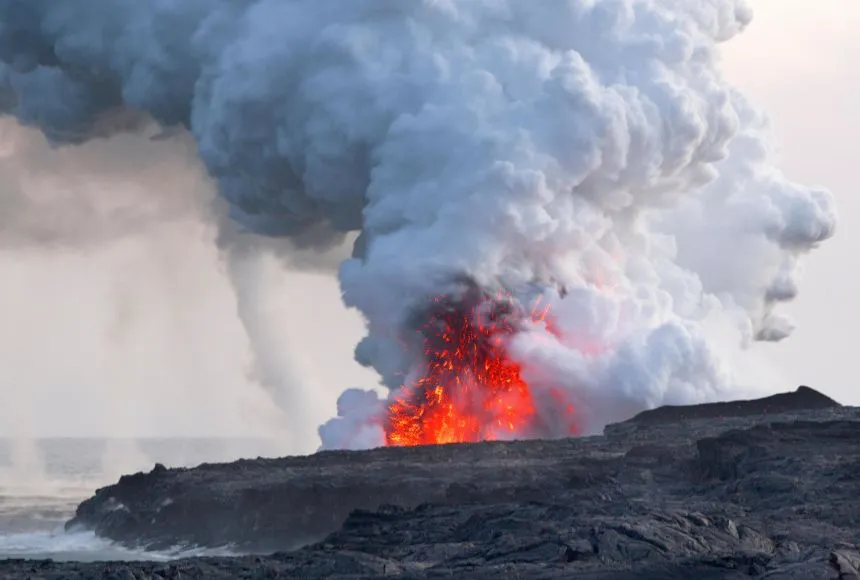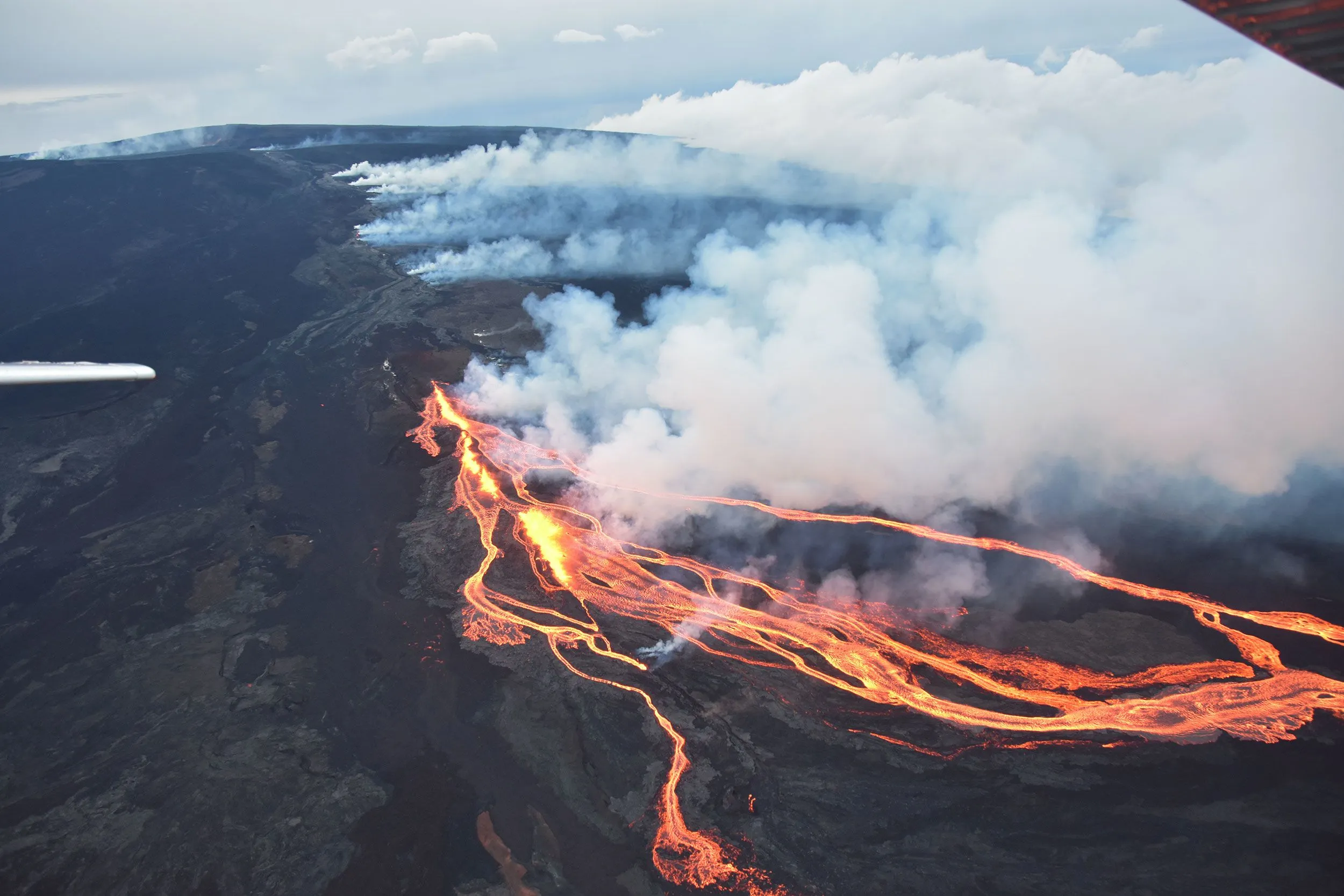Table of Contents
Hawaii is famous for its pristine beaches, lush rainforests, and laid-back island life—but beneath its tropical beauty lies one of nature’s most powerful forces: volcanoes. The Hawaiian Islands were formed by volcanic activity millions of years ago, and even today, several of these giants remain active. Understanding Hawaii’s active volcanoes gives travelers and nature enthusiasts a deeper appreciation for the islands’ ever-evolving landscape and the unique culture shaped by Pele, the Hawaiian goddess of fire and volcanoes.
The Heart of the Pacific Ring of Fire
Although the Hawaiian Islands sit far from the main Pacific “Ring of Fire,” they’re among the world’s most active volcanic regions. This is because Hawaii sits above a hotspot—a plume of molten rock rising from deep within the Earth’s mantle. As the Pacific tectonic plate slowly drifts northwest over this hotspot, magma pushes through the crust, forming volcanoes that eventually rise above the ocean’s surface.
Over time, this process created the entire Hawaiian archipelago, from the Big Island (Hawaiʻi Island) in the southeast to the older, eroded islands of Kauaʻi and Niʻihau in the northwest. The further an island is from the hotspot, the older and more dormant its volcanoes become.
How Many Active Volcanoes Are There in Hawaii?
Hawaii is home to six major volcanoes, and four of them are classified as active today. These include:
- Kīlauea – One of the most active volcanoes on Earth.
- Mauna Loa – The largest active volcano on the planet.
- Hualālai – Occasionally active, last erupted in 1801.
- Lō‘ihi Seamount – An underwater volcano that’s still growing beneath the ocean south of the Big Island.
The remaining two, Mauna Kea and Kohala, are considered dormant, though Mauna Kea still shows signs of potential future activity.
Kīlauea: Hawaii’s Fiery Heartbeat
Located within Hawai‘i Volcanoes National Park, Kīlauea has been erupting on and off for centuries. Its most recent eruptive cycles, including the 2018 lower Puna eruption and the 2023 summit activity, reshaped parts of the island and created new landscapes. Kīlauea’s lava flows have destroyed homes but also extended the island’s coastline—an awe-inspiring reminder of how Hawaii is continuously reborn.
Visitors to Hawai‘i Volcanoes National Park can witness steam vents, volcanic craters, and solidified lava fields, with opportunities to safely view the glowing lava when eruptions occur within designated zones.

Mauna Loa: The Giant of All Volcanoes
Towering 13,681 feet above sea level—and extending about 30,000 feet from its base on the ocean floor—Mauna Loa is the largest volcano on Earth. It covers more than half of the Big Island and has erupted 33 times since its first documented eruption in 1843. Its most recent eruption in November 2022 lit up the night sky and temporarily closed nearby highways, offering dramatic, unforgettable views for those lucky enough to see it.
Despite its size and power, Mauna Loa is closely monitored by scientists at the Hawaiian Volcano Observatory. The volcano’s slopes are home to observatories, hiking trails, and cultural sites that hold deep meaning for Native Hawaiians.

Hualālai: The Sleeping Volcano Near Kona
Hualālai, overlooking the Kona coast, is often overlooked compared to its larger neighbors, but it remains an active volcano. Its last eruption in 1801 sent lava flows into the ocean, forming much of the current shoreline around Kailua-Kona.
Although dormant for more than 200 years, geologists consider Hualālai “potentially active.” Seismic activity and ground deformation recorded in recent decades suggest that the volcano is recharging and could erupt again within the next century.
Lō‘ihi Seamount: The Next Hawaiian Island in the Making
Deep beneath the Pacific Ocean, about 20 miles southeast of the Big Island, lies Lō‘ihi Seamount—a young submarine volcano still forming. While it hasn’t broken the ocean’s surface yet, it’s considered the youngest active volcano in the Hawaiian chain.
Scientists predict that in tens of thousands of years, Lō‘ihi could emerge as a brand-new island, continuing Hawaii’s geological story of creation.

Visiting Hawaii’s Active Volcanoes Safely
If you’re planning to experience Hawaii’s active volcanoes, Hawai‘i Volcanoes National Park is the best place to start. The park spans over 335,000 acres and includes both Kīlauea and Mauna Loa. Visitors can hike through volcanic craters, walk across lava fields, and explore the Thurston Lava Tube—a massive tunnel formed by flowing lava centuries ago.
Always check for current conditions and eruption updates from the USGS Hawaiian Volcano Observatory before visiting. Volcanic gases, unstable terrain, and lava hazards can change quickly.
For those looking for a less intense but still thrilling adventure, exploring Maui’s Haleakalā Crater offers a chance to see the dormant side of volcanic beauty—no lava, but an unforgettable landscape sculpted by ancient eruptions.
Useful Links
- Hawai‘i Volcanoes National Park
- USGS Hawaiian Volcano Observatory
- Visit Hawaii Official Tourism Site
- Mauna Loa Observatory
- Hawaiian Volcano Observatory Eruption Updates
FAQ: Active Volcanoes in Hawaii
1. How many active volcanoes are there in Hawaii?
There are four active volcanoes in Hawaii—Kīlauea, Mauna Loa, Hualālai, and Lō‘ihi Seamount.
2. Which Hawaiian volcano is erupting right now?
Activity can change frequently. As of recent updates, Kīlauea is the most consistently active volcano. Always check the USGS Hawaiian Volcano Observatory website for current eruption status.
3. Is it safe to visit Hawaii’s volcanoes?
Yes—if you follow park rules and safety advisories. Hawai‘i Volcanoes National Park offers guided areas where visitors can view volcanic activity safely.
4. What is the largest active volcano in Hawaii?
Mauna Loa is the largest active volcano on Earth, covering more than half of Hawaii’s Big Island.
5. Will a new island form from volcanic activity?
Yes! Lō‘ihi Seamount, located underwater south of the Big Island, is slowly growing and could become Hawaii’s newest island in the distant future.
6. Can you hike on Hawaii’s volcanoes?
Absolutely. Trails like Kīlauea Iki and Mauna Loa Summit Trail offer breathtaking views of volcanic craters, steam vents, and lava landscapes.
7. What makes Hawaii part of the Pacific Ring of Fire?
Although Hawaii isn’t on the main “Ring of Fire,” it was formed by a volcanic hotspot beneath the Pacific Plate. As the plate moves, the hotspot stays fixed, creating a chain of islands over millions of years.
8. How many active volcanoes are currently in Hawaii?
There are four active volcanoes—Kīlauea, Mauna Loa, Hualālai, and Lō‘ihi Seamount. Kīlauea is the most active, Mauna Loa is the largest, and Lō‘ihi is still growing beneath the sea.
9. What’s special about Kīlauea compared to other volcanoes?
Kīlauea is one of the most active volcanoes on Earth, known for near-continuous eruptions. It’s easily accessible inside Hawai‘i Volcanoes National Park, where visitors can often view steam vents and cooled lava flows.
10. How big is Mauna Loa, and when did it last erupt?
Mauna Loa is the largest volcano in the world, rising nearly 30,000 feet from base to summit. It last erupted in November 2022, producing stunning lava flows that were safely visible from nearby highways.
11. Is Hualālai volcano still active?
Yes—though it hasn’t erupted since 1801, scientists consider Hualālai “potentially active.” Seismic activity under its slopes suggests that it still has magma movement beneath the surface.
12. Will Hawaii get a new island soon?
Eventually! The Lō‘ihi Seamount, an underwater volcano south of the Big Island, is still growing. It could emerge as a new Hawaiian island in tens of thousands of years.
13. Where can I safely see active volcanoes in Hawaii?
The best place to see Hawaii’s volcanic activity is Hawai‘i Volcanoes National Park, home to Kīlauea and Mauna Loa. The park offers safe viewing areas, hiking trails, and guided tours.
14. Are there volcanoes on Maui or other islands?
Yes, but they’re dormant. Maui’s Haleakalā is a massive shield volcano that last erupted about 400–600 years ago. It’s not active, but its summit crater provides an unforgettable look at Hawaii’s volcanic past.
15. Is it dangerous to visit an active volcano?
Not if you follow safety rules. The park and USGS post frequent updates on eruption conditions. Visitors are only allowed near safe zones, and guided tours ensure a secure, educational experience.
16. Why are volcanoes important to Hawaiian culture?
In Hawaiian tradition, volcanoes are the domain of Pele, the goddess of fire. She represents both destruction and creation—reminding locals and visitors alike that the islands themselves are living, sacred land.
If you would like to read and learn more about interesting things in Hawaii! Check out our blog page here on our website!
or
